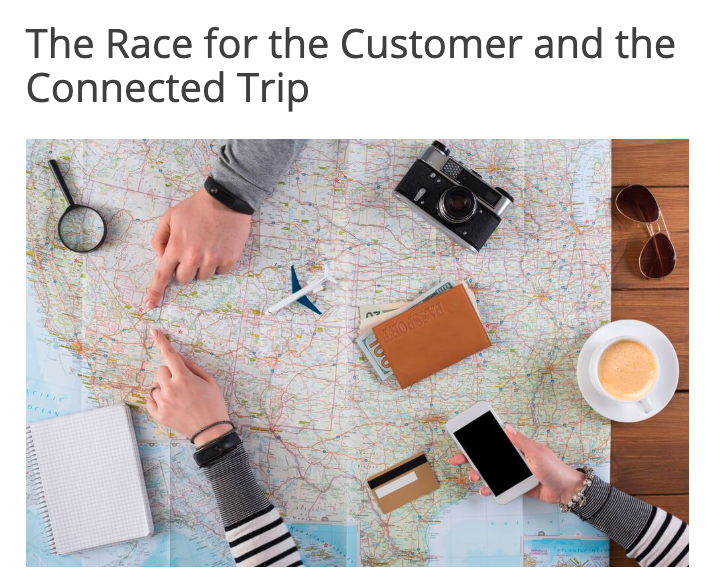I have been working in loyalty tech for more than 20 years and never have I been more excited about the opportunities that travel, hospitality, and lifestyle brands have to truly deliver on the promise of an incredible customer experience.
The concept of curation, and VIP experiences, has been amplified through social media and the demands of a savvier consumer. And technology has finally caught up, with a slew of tools and products that can deliver on that brand promise at scale.
As we launch into the new year, here are the 20 developments and trends I am most excited about in 2020 and beyond.
1. Program INTEGRATIONS
"If you want to go far, go together."
2019 saw highly publicized partnerships, like between IHG and Mr. & Mrs. Smith Hotels and Choice Hotels & AMResorts. Loyalty programs are realizing that expanding earn and burn opportunities makes their currency more valuable and we expect the race to continue.
Increasingly, these partnerships need to be seamlessly integrated through tech - a promo code just isn't cutting it. Business development and partnership management departments are becoming increasingly tech savvy as they're now responsible for managing successful integrations between programs, not just signing contracts.
2. Going (even more) Green
I don't see carbon-conscious consumption slowing down any time soon and airlines are already feeling the impact of flight shaming. Green projects and ethos is becoming a competitive advantage in a crowded marketplace. Simply put, consumers want to feel great about where they're spending their money.
I also predict that hotels, car rental companies, and tour operators will soon join the party, looking for unique ways to offset their consumption and feed a feel-good narrative with customers. Non-profits like CarbonFund (who JetBlue recently announced as their offset partner) , are benefitting from major corporations' inability to perform carbon remediation themselves at scale.
3. MEETING THE NEEDS OF BLEISURE TRAVELERS
60% of professionals say that they combine business and pleasure while traveling. So why do airlines and hotels still look at trip purpose as binary?
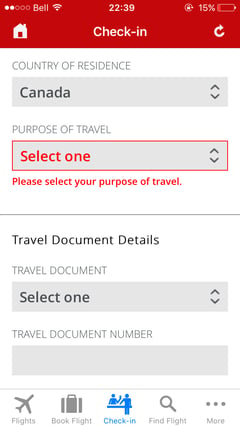
"Leisure and business travel come close to being different disciplines. The skill sets are similar, but the knowledge base, attitudes, expectations, and payment mechanisms diverge." - Marc Castro, CEO of Castro Travel
I believe 2020 is the year when savvy travel companies start recognizing the opportunity for blended offers that meet the dual needs of travelers. This means tackling the promise of the "connected trip" even when booking occurs across different devices, credit cards, and loyalty programs. That means relying heavily on CRM systems that can track customer movement throughout their buying journey and destination experience.
CASE: Looks like Southwest is getting wise. They now offer "both" as an option when selecting your trip purpose.
4. Mobile App emphasis
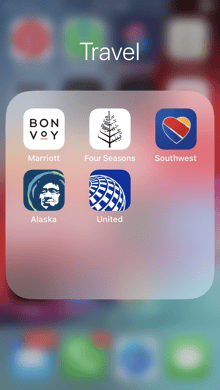
According to some hotel loyalty executives their MVP metric is no longer just number of loyalty program members enrolled. They're now focused on app downloads. "If someone doesn't have our app I don't even consider them a part of our loyalty program," said one executive at a private conference. Mobile app downloads demonstrate program commitment and allow loyalty programs to market to customers without relying on email. And they also provide a dedicated experience with no interference from OTA's. And lastly, conversion rates are higher. Much higher.
Hotels and airlines are ahead of the curve, mostly due to the dual purpose their apps serve. For airlines they hold your boarding pass, and for many hotels the app acts as a room key. Credit cards and financial services companies need to work to find ways to drive app usage beyond a monthly balance check.
5. Employer Loyalty
Workers are changing jobs more frequently than ever before. Giving stock options that vest over a long period of time has been the traditional way to incentivize long tenure, but we're hearing increasingly that large employers want to create their own loyalty currencies that enable their employees to purchase everything from airfare to HDTVs.
6. Everyday Rewards
in 2018 Americans left 768M days of PTO unused, and only traveled an average of 9 days that year. 28% of Americans didn't take a single leisure trip last year! So relying on travel benefits alone for the value of your program is missing the point for the vast majority of U.S. based members.
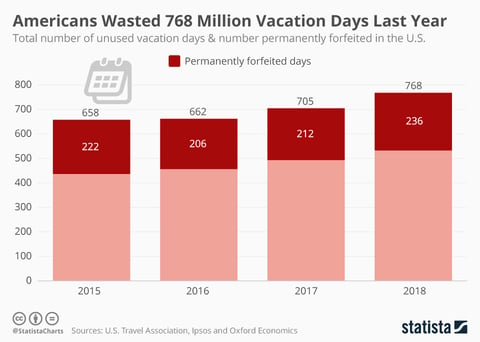
We've see a sea change, with travel brands focusing on increasing engagement at home to truly stay top of mind. That means integrating your program with lifestyle rewards like online shopping, rideshare, restaurant reservations, or daily-use apps like DoorDash or Netflix.
Currencies which can be earned from the member's couch will become more valuable. Amongst our hotel clients we know that 33% of the engagement on their ancillary platforms is coming off-property. The value of that time on-site, when a user is not trip planning, is enormous. Companies that can deliver incremental value 365 days a year will surge in 2020.
7. Subscription Loyalty
American Airline's AAirpass - unlimited first class travel for life - might have been and idea ahead of its time. That was before the rise of subscription culture and the idea of paying monthly for everything from video content to clothing. Inspirato introduced the Inspirato Pass in 2018 - all-you-can-travel for $2,500/month - as the first major dip into subscription programming for travel.
Similarly, in November Delta announced that members can now pay for top tier status. I predict we'll see additional brands begin to experiment with a subscription model, and more ways to access top tier rewards.
8. Super apps
The industry has been talking about the "Amazon of Travel" for a very long time. No brand has managed it yet, but some are inching closer. In Asia, WeChat has 1.08 billion monthly active users and 79% Chinese market penetration. The proposition is that users get a one stop shop for messaging, purchasing, booking, and planning. No friction.
9. Pet Friendly Travel Products and Partnerships
One of my favorite partnerships this past year was between Air Canada and pet-sitting app Rover. Consumer spending on pets continues to grow and travel companies have realized that pet care is an important part of the travel experience.
10. Microburn
It is fairly well known that the majority of loyalty members don't ever engage with the program and that they never use their points. Often they have a small number of points in a few programs.



Enter the concept of microburn. We define microburn as any redemption opportunity that is below the point value needed to redeem the primary product (typically a flight or hotel room).
“The more that people are using their points and doing things with it that get them active in our system, the more we get them thinking about us, the more they spend with us.” - Chris Nassetta, CEO of Hilton
Getting to redemption quickly is key to activating new program members, but if you have to wait multiple stays, or rely on them signing up for the cobrand card, you're going to have a large number of members that are never activated or engaged. Both first party products (late check out, poolside cabana) and third party products (food delivery, attraction tickets) are great opportunities to provide value, and delight members.
11. Voice
"Hey Siri, how many Delta Skymiles points do I have?" The rise of voice has been slow, steady, and unexpected. No, I don't believe travelers will be booking complex itineraries via Alexa any time soon, but I do think loyalty integration into the internet of things will explode in 2020.
12. Personalization
I recently spoke about personalization at Phocuswright and it was interesting to hear what other companies in the space, like Foursquare and Facebook, are doing to power personalization in travel.
 My position at that event was that we're not there yet, particularly when it comes to the post-click experience. Most personalization today happens in advertising through smart messaging or retargeting, but can fall flat when you dig into the offer. This is for a few reasons but largely stems from tech challenges related to:
My position at that event was that we're not there yet, particularly when it comes to the post-click experience. Most personalization today happens in advertising through smart messaging or retargeting, but can fall flat when you dig into the offer. This is for a few reasons but largely stems from tech challenges related to:
- Lack of accessible structured data on your customers
- Need for AI to turn that data into relevant offers
- Skepticism on ROI from within the organization limiting tech investment in the above
Is 2020 the year brands start solving these problems? I believe so. For starters, the tech needed to blast through these challenges is more affordable and accessible than ever. And secondarily, the economic landscape means brands will work harder to retain and expand their best customers. So marketing dollars that might be spend on new customer acquisition will be transitioned to tech ecosystems focused on loyalty.

I think we're still years away from Minority Report, but driving closer to brand interactions that are relevant 75% of the time, and speak to my unique loyalty drivers.
13. Building for Instagram
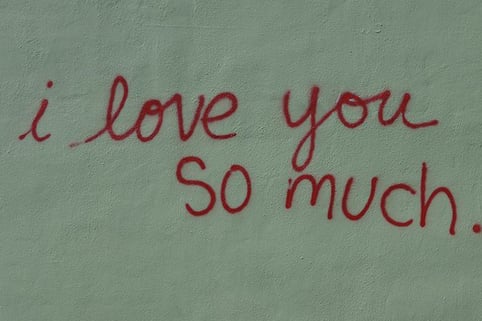
Instagrammable (or WeChattable) moments are now driving traveler behavior and decision making - especially for APAC travelers.
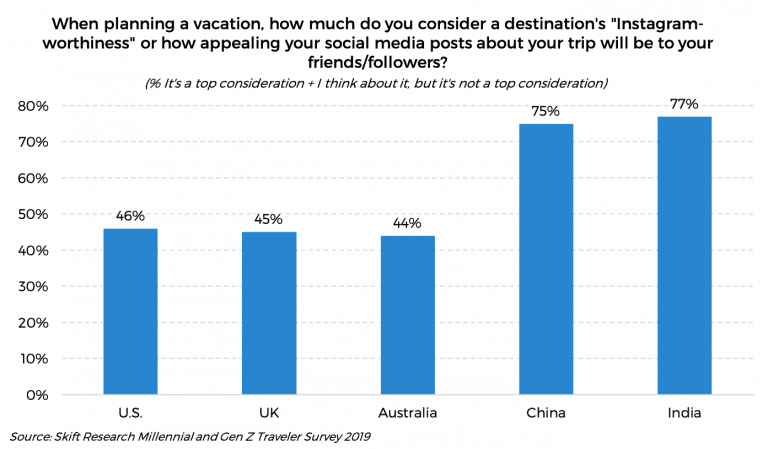
Aesthetics worthy of social media are no longer a nice to have, they're the price of admission. So we foresee loyalty programs prioritizing opportunities that are built for social media - concerts, exclusive events, and gourmet cuisine, over standard offerings.
14. Turning passive members into active members
One of the stats I see quotes most frequently is - 54% of loyalty program members are inactive. Companies are getting laser focused on activating that 54%. They're already pre-sold - they've expended the energy to join the program, opted in to marketing communications, and you've got at least some data on them to make messaging relevant.
There are many reasons why members may be inactive, or less active than you would like, but it typically comes down to limited opportunities for redemption, or redemption opportunities that don't intersect with their needs. So partnerships that expand what can be purchased with loyalty currency are crucial to re-engaging these members.
15. courting Foodies
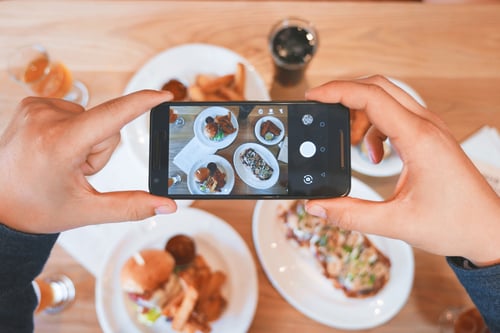
Nearly 25% of travel dollars are spent on food, and that number jumps to more than 1/3 amongst foodies. The overlap between the highest spending travelers and "foodies" is strong, so many savvy brands, even those for whom dining is well outside their wheelhouse, are courting enthusiastic eaters.
Mastercard launched their Priceless popup restaurants in 2019. American Express bought Resy in 2019 as well. And Marriott has been partnering with local dining provider EatWith since 2018. Perhaps the way to a loyalty program member's heart is through their stomach.
16. Instant Redemption
I'm consistently surprised, talking to major brands, with the manual processes, and spreadsheets that still drive their loyalty programs. However, this is changing rapidly. Point banks and CRMs are becoming more sophisticated and communication between these systems is now happening in real time. This means that instead of waiting 4 to 5 business days for points to appear in your account, loyalty members have immediate access to rewards.
60% of loyalty members will leave a loyalty program if they feel that they can't redeem points fast enough. So brands are taking advantage and finding ways to delight customers fast.
17. Wellness
We are focusing on the landmarks of well-being – how guests, colleagues and customers feel, fuel and function. Feel encompasses mental and emotional health. Fuel includes food and powering your body through sleep. Function is how you physically move, how you function in work, life and play. We are defining this common language around which to map products and services. - Mia Kyricos, SVP of Well Being, Hyatt
Hyatt's ethos of wellness speaks to the growth of the wellness industry, now larger globally than the travel industry. As I was writing this Skift published an article about the intersection of travel and wellness in 2020. Hospitality companies are realizing that wellness - everything from exercise to sleep hygiene - is a part of the travel experience and allowing customers (especially the coveted business traveler) to keep their routine while traveling is a great way to drive devotion.
18. CHAT
.png?width=300&name=Image%20from%20iOS%20(3).png)
Buying by text or through a chatbot is more popular than ever. Millennials in particular prefer less human contact when making a purchase, and conversational AI has become sophisticated enough that its eliminating the need for tier 1 customer service agents in many cases - a win for the bottom line!
Hilton's chatbot Connie (left) sends guests a message shortly after checkin, and serves as the liaison between the traveler and the front desk. It even offers recommendations on things to do, nearby restaurants, and the best time to check out the sunset from the pool deck.
Chat combines the personal touch that top tier loyalty program members require with the ease of booking quickly, and mobile-first approach.
19. Loyalty Communities
We know of at least 3 major brands that are working to disrupt tools like TripAdvisor Google Reviews with closed communities where their loyalty members can make recommendations, share itineraries, and interact with each other. Creating communities gives members a sense of identity and belonging that can drive deep loyalty even when not traveling.
20. The Connected Trip
While technology is becoming more seamless, travel and in-destination experiences still remain fragmented. Your airline is not talking to your hotel, and your hotel is not talking to your rental car reservation.
Several major players are trying to change this with the promise of the "connected trip." The idea dates back to at least 2014, and dreams of an experience where hotel check-in begins when stepping off your flight, and restaurant reservation options arrive by push notification
OTA's (and especially Booking.com) in particular seem to be most aggressive in their pursuit, simply because they already serve as the booking hub for multiple trip elements, and have large tech teams to execute technically.
However, a number of airlines and hotels are also getting wise to traveler desires for frictionless travel. Marriot, IHG, and Hilton all have made significant strides to offer products beyond the hotel room. And most major airlines, like Southwest and United, now offer points earn for hotel rooms and experiences. We've yet to see these systems talk to each other in an integrated way, but the foundation is being laid.
-
2019 marked our 20th year in business. As we look into 2020 I'm amazed by how this industry has evolved and grown. There remains limitless opportunity to empower travelers and drive true loyalty through technology.
Think there's a trend I missed? Comment below.



